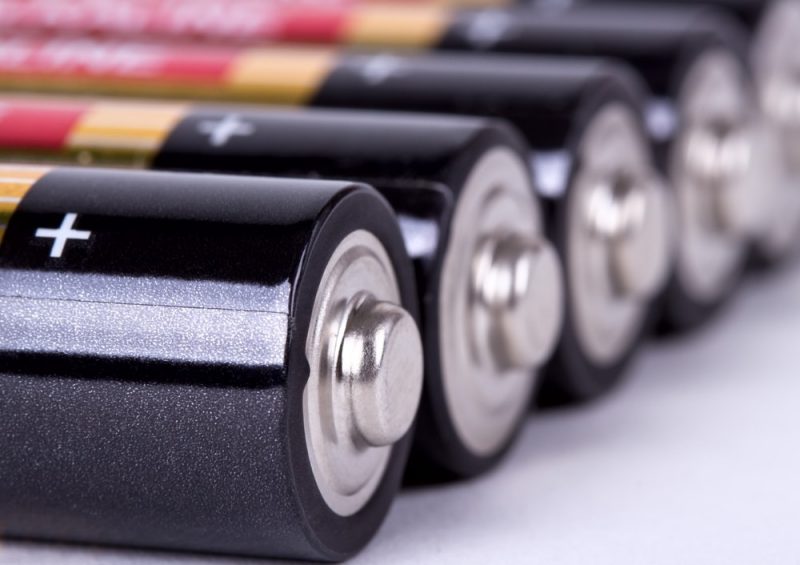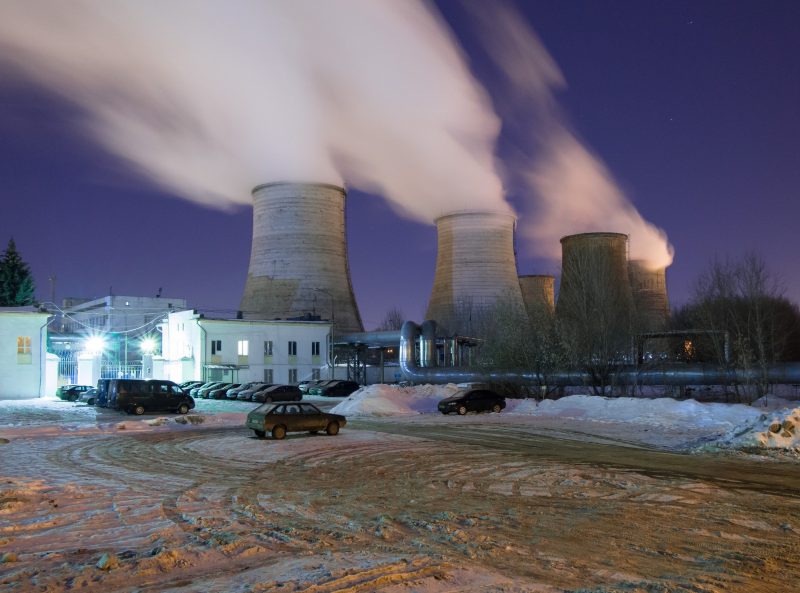We call electric energy the phenomenon in which the difference in electric potential between two or more points –that is, the difference in their electric charges– connected by a transmitting medium (electric conductor), produces a transfer of negatively charged particles (electrons) from towards each other. Said charge, called electric current, can then be transformed into other forms of energy, such as caloric, kinetic, mechanical or light. For instance: urban lighting, lightning, rechargeable batteries.
The most suitable materials to facilitate this transmission are, until now, metals, since they have the highest charge of free electrons in their atomic structure. That is why electrical energy is conducted from its generation sources to its places of consumption through a distribution network of metallic cables (copper) covered with insulating rubber.
Electric power is considered today as one of the elemental needs of contemporary man, so that its generation and commercialization are carried out in different ways throughout the world.
Electric power generation
Yes OK exists in natureAs in electrical storms, the electrical energy that man uses daily is generated in specialized plants through a rotating mechanism capable of generating direct current (a dynamo) or alternating current (alternator).
This movement in turn requires an injection of mechanical energy, generally obtained from large falls of water (hydroelectric), the passage of wind (wind) or the expansion of gases in a turbine, the latter heated by fossil fuels, controlled nuclear reactions or other sources of heat.
Another way to produce electricity is by electrochemical reactions, such as those that take place inside batteries or different models of accumulators.
Electric energy storage

Like so many other forms of energy, electrical energy can be stored in batteries or accumulators, usually made up of reactive chemicals and metal atoms. Most operate based on the ordering of these positively or negatively charged particles, to promote a usable flow of electrons that reside in compartments or “cells” of different sizes.
The use of solar energy, in fact, operates using similar cells to convert the heat energy of solar radiation into a usable source of electrical energy.
Advantages and disadvantages of electric power
This type of energy so common today meant a leap forward in the industrialization of the world and allowed contemporary technological development. Furthermore, our model of society would not be sustainable without it. Even so, we can identify the following advantages and disadvantages in it:
- The advantages of electricity are numerous. It is a versatile, fast, powerful form of energy that is relatively simple to handle and can be stored for long periods of time under ideal conditions. On the other hand, its handling is moderately economical, although its big problem in that sense is the generation.
- Another advantage of electric power. Is that his study sheds knowledge about the atomic nature of the world, since it is together with the magnetism of one of the main forces that act in our universe.
- The main disadvantage of electricity. It points to the cost of producing it, since it cannot be derived from nature and must be generated through the use of fuels (often polluting or risky) or through direct intervention in nature (such as the installation of hydroelectric dams). All this with a significant environmental cost, even in the case of batteries, which once discarded release their heavy metal content into the environment. However, there is a growing demand for “green” or ecological energy, coming from solar radiation and wind power.
- Risks comprise the other downside. Since the direct action of electricity on living beings produces burns and risks of shock, and is capable of producing fires and natural disasters when due precautions are not taken in its urban installation. Similarly, power lines are vulnerable to climatic effects and many times the environment affects blackouts or drops in the distribution network.
Examples of electrical energy

- Urban lighting. One of the great changes in recent times was imposed by electrical energy in the way of conceiving cities, which until now were lit at night with gas lanterns, in the best of cases. The management of electricity made electricity more massive and allowed our cities to be more and better illuminated today than before.
- The ignition of automobiles. As we all know, automobiles operate on the burning of fuel (gasoline), but to initiate that controlled reaction they require an initial spark that occurs when we turn the ignition key. Where does that spark come from? Well, from the electrical energy contained in the accumulator (battery) of the car, which is then recharged by the alternator and thus keeps the electrical systems running.
- Activation of an appliance. When we turn on the blender, the television or the computer, these devices use electricity for their operation, so they must be connected, through the plug in the wall, to the electrical supply network of our city. Thus, electricity is converted into different things: mechanical energy, light energy, information, etc.
- Our own body. It is known that the human body also works with specific and controlled doses of electricity. Between neurons, for example, there are electrical exchanges; muscles are operated on the basis of controlled discharges that activate elastic cells, etc. This does not mean that we can “charge” with electricity like batteries; Quite the contrary: contact with large electrical charges can lead to death or severe damage of all kinds.
- Defibrillators in hospitals. Taking advantage of the knowledge of the previous point, in hospitals a device called a defibrillator is used, which by means of controlled electric shocks makes it possible to try to start a stopped heart again. This serves to try to revive people in cardiac arrest and prevent damage to their various tissues, but it does not mean that, as Doctor Frankenstein dreamed, we can revive the dead with electricity.
- The Lightning. The classic example of electricity in the wild is the lightning that occurs in a thunderstorm. These are discharges visible to the naked eye in the form of light rays, whose explanation is none other than the difference in the electrical charge between the particles suspended in the rain clouds and the ground, which is violently balanced through these sudden emanations. of energy.
- Rechargeable batteries. A rechargeable battery is an accumulator designed to allow the extraction and incorporation of electrical energy into its chemical components, through reversible chemical reactions. Thus, incorporating electricity generates charged ions that can then transmit their electrons by bringing the positive and negative poles together, like any ordinary accumulator.
- Electrolysis. This chemical laboratory process consists of adding electricity to various reactions or substances to separate them into their integrating components. Thus, for example, the electrolysis of water can separate oxygen from hydrogen, and this allows these elements to be rescued for later industrial or experimental use.
- Electric heating. Through a system of resistances, through which the electrons flow, thus generating a quota of caloric energy, these devices serve to counteract the cold without the need to consume matter (without combustion) or generate toxic by-products. Of course: the load of electrical energy consumed is quite high in comparison.
- The many power plants. Whether they are nuclear, hydroelectric, wind, geothermal or fossil fuel-burning plants such as coal and natural gas, there are hundreds of electricity generation sites on the planet that power different nations. One of the most famous of all time was Chernobyl, in Ukraine, which suffered a major breakdown in 1986 and contaminated hundreds of hectares around with radiation in what was called the Chernobyl Accident.

Other types of energy
| Potential energy | Mechanical energy | Kinetic energy |
| Hydroelectric power | Internal energy | Caloric energy |
| Electric power | Thermal energy | Geothermal energy |
| Chemical energy | Solar energy | Sound energy |
| Wind power | Nuclear energy | Hydraulic energy |
